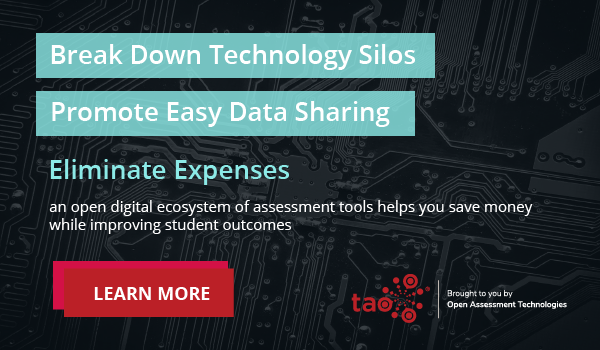Planning effective lessons takes time — time that most educators and homeschooling parents simply don’t have. Whether you’re juggling diverse learning levels in a single classroom or building a curriculum from scratch at your kitchen table, the pressure to create engaging, standards-aligned content can feel overwhelming. Add in limited budgets and an ever-growing list of responsibilities, and lesson planning becomes a daunting task.
That’s where AI lesson plans come in. By tapping into free, easy-to-use AI tools, you can streamline your planning process, spark new ideas, and tailor lessons to your learners’ needs without sacrificing quality. In this article, we provide practical advice for using AI to write lesson plans.
Key Takeaways
- Generative AI helps educators save time and spark creativity by assisting with brainstorming, structuring, and customizing lesson plans.
- Free tools like ChatGPT, Claude, and Gemini are accessible and effective for teachers, curriculum planners, and homeschoolers.
- AI can support differentiation, align lessons with standards, and generate leveled materials—but it still relies on teacher insight.
- TAO Testing offers AI-enhanced tools that integrate planning and assessment, making it easier to deliver data-informed, personalized instruction.
What Is AI-Powered Lesson Planning?
AI-powered lesson planning uses generative AI, a type of artificial intelligence that creates original content like text, images, or even full lesson plans based on user input. Unlike traditional planning, which requires manual research and formatting, generative AI tools can quickly suggest activities, align lessons with standards, and tailor content for different learning needs. It’s like having a digital co-teacher that helps you plan smarter, faster, and more creatively.
The Impact of AI in Modern Lesson Planning
Generative AI is beginning to play a practical role in lesson design, especially where time and resources are stretched thin. Instead of starting from scratch, you can input a topic or standard and receive a structured starting point—often in seconds.
While still evolving, these tools are already helping teachers manage large workloads and customize learning more easily. That being said, it’s important to note that generative AI doesn’t replace your expertise. It works best as a brainstorming partner, not a decision-maker. Your professional judgment is still essential for ensuring lessons are accurate, relevant, and meaningful for your students.
How Teachers Are Using AI Lesson Planning in the Classroom
Generative AI is becoming more than just a trend. Below, we break down how educators are applying AI lesson tools practically in their classrooms, whether they’re teaching second graders, prepping high schoolers for exams, or building a homeschool curriculum from the ground up.
Brainstorming lesson ideas
One of the biggest pain points in lesson planning is just getting started. Generative AI tools like ChatGPT, MagicSchool.ai, or LessonPlans.ai can help break through the blank-page syndrome. By inputting a topic (e.g., “ecosystems for 4th grade” or “the Cold War for 10th grade”), educators can receive a draft outline, suggested activities, or even essential vocabulary to teach.
For instance, an elementary teacher could use the following prompt:
“Teach fractions using real-life scenarios to 3rd graders.”
The outcome could be anything from a grocery store situation to a problem based on recipes. This kind of AI-assisted brainstorming isn’t about copying a full lesson—it’s about generating a range of creative possibilities you can mold to suit your students.
For homeschool parents, it can spark new directions for thematic units or cross-subject integration, for example, combining history and literature through historical fiction.
Structuring a lesson flow
Once you’ve got your core idea, generative AI can help with pacing and sequencing. Teachers can prompt AI to suggest a lesson structure using a particular model, like “I do, we do, you do” or the 5E instructional model (Engage, Explore, Explain, Elaborate, Evaluate).
For example, a high school biology teacher might input:
“Create a 60-minute lesson plan on mitosis using the 5E model for 10th-grade students.”
In seconds, the tool can return a draft with an opening activity (Engage), a hands-on exploration, a guided explanation, a collaborative discussion, and a quick assessment—all of which can be customized.
For homeschooling parents, this kind of scaffolding is especially helpful if you don’t have a formal teaching background. Instead of starting from scratch, AI can generate a lesson outline that you can enrich with your own resources or preferred teaching style.
Aligning with standards and learning objectives
Many generative AI tools now include features that let educators align lesson content with specific learning standards, such as the Common Core or NGSS. For instance, TAO is introducing AI-enhanced tools that streamline both assessment creation and open response grading, helping educators design instruction that’s aligned, adaptive, and data-driven. By integrating content creation with standards-based evaluation, TAO will allow you to build and refine assessment items while continuously tracking student progress.
For subject specialists at the secondary level, this saves time and ensures your lessons stay anchored to curriculum goals. For homeschoolers in states requiring documentation, AI-generated plans with clearly defined objectives can make reporting easier and more structured.
Differentiating for mixed-ability learners
Every teacher knows the challenge of planning for a wide range of learning levels in one room. Generative AI can help by suggesting differentiated versions of the same activity or text. For example, you might ask:
“Rewrite this reading passage at a 5th grade, 3rd grade, and 1st grade level.”
Tools like Diffit or MagicSchool.ai can do just that, providing leveled materials in moments. You can also prompt AI to create extension activities for advanced learners or simplified practice for students who need more scaffolding. This kind of built-in flexibility is invaluable: not only does it support differentiation, but it also reduces prep time dramatically.
Creating custom resources
Once a lesson structure is in place, many educators use AI to generate specific teaching materials, such as exit tickets, worksheets, quiz questions, and even rubrics.
For example, you might use the following prompts:
- Exit ticket: “Write a 3-question exit ticket on the causes of the American Revolution.”
- Rubric: “Create a rubric for a 7th-grade science project on renewable energy.”
Tools like Curipod also allow you to design these resources visually, which is great for elementary teachers looking for engaging visuals or homeschoolers wanting materials they can print at home.
Supporting inclusive and SEND teaching
Some AI tools can assist with planning lessons for students with special educational needs and disabilities (SEND). While human insight is always key, AI can be a helpful starting point for generating visual supports, alternative assessments, or lesson adaptations.
For example, a teacher might ask:
“Suggest ways to adapt this math lesson for a student with dyscalculia.”
Or:
“Create a visual schedule for a student who benefits from routine and structure.”
While these suggestions should always be reviewed and refined, they offer a useful springboard — especially for educators new to teaching in inclusive classrooms.
Reflecting and iterating
Lesson planning doesn’t end once the materials are printed. Many teachers are now using AI to reflect on what worked and what could be improved. After a lesson, you might enter:
“My 4th-graders had trouble making sense of diagrams. Help me revise this lesson on plant life cycles to make it more interactive.”
This kind of quick iteration helps educators fine-tune their instruction week by week. AI won’t replace your classroom experience, but it can offer fresh angles or small tweaks you may not have considered.
Keep in mind: AI is a tool, not the teacher
While AI can accelerate your planning and spark creativity, it’s still just a tool. Always review AI-generated content for accuracy, alignment, and tone, especially when working with younger learners or sensitive topics. The best outcomes are when you pair AI’s speed with your professional judgment and classroom insight.
Conclusion
For busy educators and self-guided planners alike, generative AI is proving to be a valuable ally. It’s not here to take your role, it’s here to support it. By streamlining the most time-consuming parts of lesson planning, AI lets you focus more energy on the parts of teaching that matter most: connecting with students, adjusting instruction in real time, and creating memorable learning experiences.
As the field evolves, educators who explore these tools now will be better positioned to shape how AI fits into future classrooms in thoughtful, ethical, and effective ways. For more resources on using AI in education, check out these helpful articles:
- How Do Teachers Detect AI-Generated Work?
- Could Generative AI Tools Impact Cheating on Tests?
- How To Use Branching, Item, and Testlet Adaptive Assessments
Get Started With TAO: Smarter Planning Starts Here
If you’re ready to spend less time managing workflows and more time teaching, it’s time to explore what TAO can do for you.
As an open-source assessment platform built for educators and institutions, TAO empowers you to integrate AI-enhanced assessment creation with robust, standards-aligned grading tools. Whether you’re designing full curricula or building daily activities that adapt to your students’ needs, TAO helps you deliver instruction that’s thoughtful, data-informed, and personalized — without the guesswork.
Generative AI is transforming how we plan. TAO ensures that transformation is effective, ethical, and built for the real-world needs of educators like you.
👉 Get started using TAO Testing today — schedule your free demo and see how we can support your planning, assessment, and professional growth.
FAQs
- Can I really use AI for free in my lesson planning?
Yes! tools like ChatGPT (free tier), MagicSchool.ai, and Curipod offer free features ideal for quick, creative planning.
- How do I make sure AI-generated lesson plans are accurate and appropriate?
Always review and adjust AI content, using your professional judgment to ensure it fits your students’ needs and curriculum.
- Do I need to be tech-savvy to use AI tools?
Not at all—many AI platforms are built to be intuitive, even for educators and homeschoolers with minimal tech experience.

